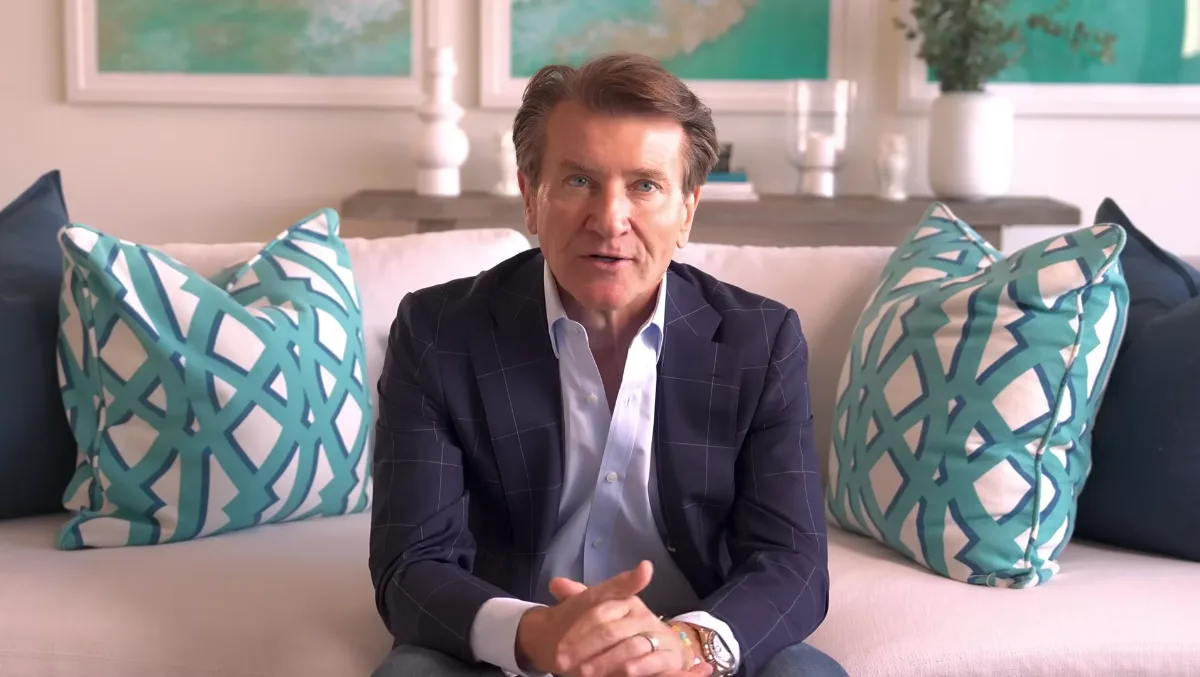
Robert Herjavec was in a conversation with a fellow investor, Grant Cardone, when he was asked a provocative question. Cardone questioned him: If you had just one million dollars left and you could only invest that million in one thing, what would you do?
Without hesitating, he stated that he would invest in real estate, explaining the logic that if you only have a single shot, you need income, a foundation, and stability. You require constant cash flow generation along with economic growth.
As he put it: “I’d get an income stream, and then forget it existed — and go build other things.”
Thus, his response resonated not because he is a Shark on national television, but because he has built his empire and wealth over decades. Moreover, his answer holds a moral that, whenever you are in doubt, select the assets that provide consistent income, especially in uncertain times.
Why Real Estate? According to Herjavec
Robert Herjavec chose real estate because it is an income-producing sector, which is dependable and durable.
Here’s what real estate offers:
- Reliable income stream: In the real estate sector, rental properties generate consistent monthly income or cash flow, which often increases over time.
- Inflation hedge: Investing in real estate protects investors against erosion of value due to inflation. Because the cost of land, labor, and material rises, along with property values and rents.
- Tangible asset: Real estate is a physical asset, unlike stocks and bonds. Thus, it has an intrinsic value in terms of land and long-term stability.
- Flexibility in scale: Moreover, with the help of tools like REITs (Real Estate Investment Trusts), and crowdfunding platforms, you can invest into diversified portfolios.
Hence, Robert understood the fact that if you are left with your last million dollars, you cannot invest in any risky venture. In fact, at that time, you require a foundation.
What This Means for Canadians and People Worldwide
Though Robert Herjavec is a Canadian, his response to the question above applies widely to every country. In today’s era, income stability has become more significant because of economic volatility and inflation.
Real Estate Remains a Key Anchor for Wealth
When population increases and housing demand rises, rental housing properties can provide recurring income and capital appreciation at the same time. In Canada, America, and beyond, real estate has been the core of wealth-building.
Consequently, Robert’s advice is not about getting rich faster. However, because of the rising cost of living and financial uncertainty, his recommendation is about resilient income.
You Don’t Need to Be a Millionaire to Start
You do not require a massive investment to get exposure to real estate. With the help of REITs, crowdfunding platforms, and real-estate exchange-traded funds (ETFs), many Canadians can get in with limited capital. Thus, if you want, you can allocate a portion of your savings towards real estate.
Real Estate Offers Balance
For people who are worried about economic swings and inflation, this sector offers them appreciation of asset value, cash flow in terms of rent and dividends, and a hedge against volatility.
What Makes Herjavec’s Advice Particularly Credible
Robert Herjavec did not get rich because of luck. Instead, his journey is all about street-smart moves, a sharp understanding of the market, sales, and business cycles. Thus, his recommendation is of key importance.
He started off with a humble beginning, working for a luxury menswear company. Consequently, he gives credit to that experience, which taught him to spot affluent clients. Moreover, he founded a cybersecurity firm to prove that he could succeed in fast-moving industries.
Furthermore, proving his recommendation, he has also invested in buying rental properties, mansions, and other investment-grade properties.
How Canadians Can Follow That Advice
Here are a few practical steps, inspired by Herjavec’s outlook, whether you’re starting small or have substantial capital:
Explore Real-Estate Funds & REITs First
If buying a house or property seems out of reach, REITs and real-estate ETFs are great alternatives. They let you invest in real estate indirectly, often with low minimums, and collect dividends rather than manage tenants.
Treat Income from Real Estate as “Safety Cash Flow”
Herjavec recommends “forgetting it exists,” which means to treat rental or passive cash flow as baseline income or buffer. This separation helps you avoid the temptation to re-invest recklessly.
Diversify, But Keep Real Estate as One Core Pillar
Real estate should be part of a diversified portfolio along with stocks, retirement funds, and savings. However, the idea is to anchor your finances and generate recurring income.
Keep a Long-Term Horizon & Think in Decades
Real estate often rewards patience. Over 10–20 years, income and property appreciation, and inflation-protection can combine into a strong wealth base, especially if you reinvest wisely.
Potential Risks and Why Real Estate Isn’t a Magic Bullet
Robert does not state that real estate is entirely risk-free. Instead, like any other asset, it also has ups and downs;
- Liquidity: Robert also claims that the real estate sector is not as liquid when compared to stocks and other financial assets. Selling properties takes patience and time, as you need to understand the market conditions, taxes, and the closing costs.
- Upfront cost: Real estate also has some upfront costs, including maintenance costs, down payments on the property, taxes, and more.
- Economic cycles: In this sector, rental or housing property values are affected by regulatory changes, interest rates, and local demand, further causing volatility.
- Maintenance responsibility: You have to manage rentals or maintenance, which requires time. You may also have to hire help if needed.
Robert Herjavec’s recommendation works when investors understand the real estate approach and trade-offs as a long-term asset.
Why Does His Advice Resonate in 2025?
In the year 2025, the economic conditions remain uncertain, including inflation, interest rates, and market volatility. Thus, in this environment, the combination of constant cash flow, tangible assets, and an inflation hedge works as one of the safest bets.
For Canadians, where housing and rental demand remain robust in many urban areas, real estate offers a way to build wealth without high-risk bets.
In short, whether you’re a seasoned investor or just starting out, real estate remains a powerful foundation for financial security.


















